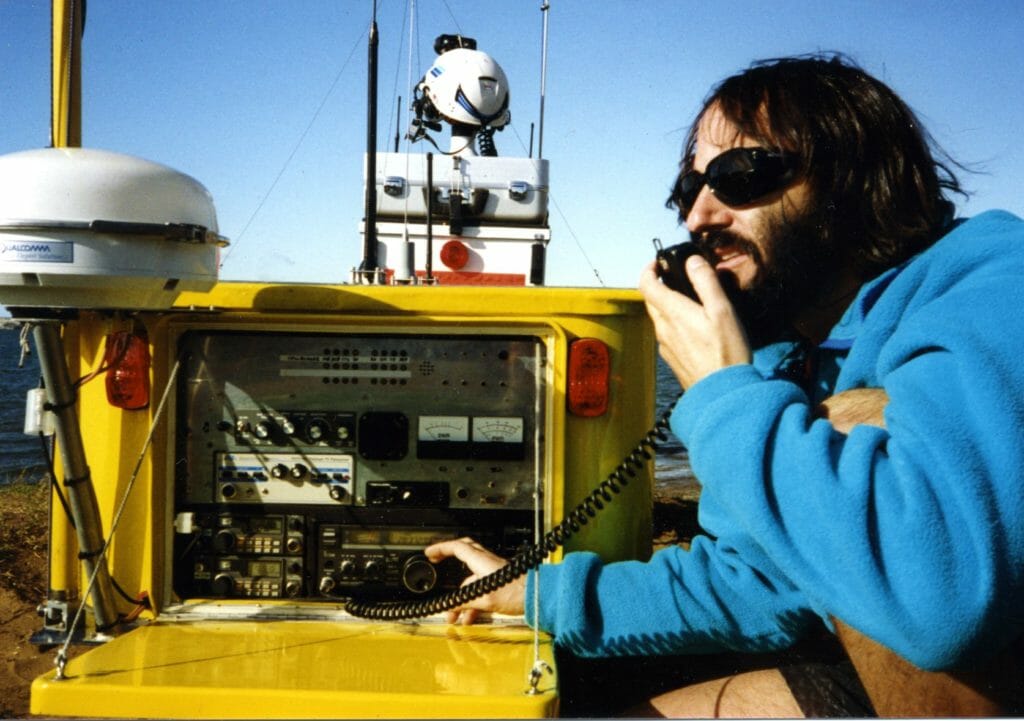
Bikelab Report #10 – Antenna Farm
by Steven K. Roberts
Silicon Valley, California
May 28, 1991
“Daddy toys!”
— concise assessment by Julia Selfridge, age 2,
upon being introduced to BEHEMOTH for the first time.
Well, there are now 49 days to departure, and I’m in the D phase of the PFD phenomenon that most concisely describes my work habits (Procrastination Followed by Despair). It is clear now that the machine will indeed roll. It has gears, brakes, lights, a CatEye, and a radio… all working. There’s pack space, and most areas are waterproofed. Many subsystems are nailed down on the bike and have been tested on umbilici, but now await cabling or software to become useful. The primary task is to complete as many “lab” tasks as possible in the next 7 weeks… for after that, I will no longer have the milling machine, hardware inventory, high-speed scope, huge work area, or all those wonderful new daddy-toys still shrink-wrapped on the bench.
Good thing this is a passion, eh?
Actually, the project is moving faster than ever — I have new help. Answering my recent call, Martin Rowland has moved up from San Diego to be the techno-gofer and general assistant between here and departure. This helps a lot, greatly reducing the time spent moving my body around Silly Valley in order to acquire objects. Zonker Harris of Telebit is donating some time to bring up the ham gear and related components, Bill Muench and Mike Perry are helping get the FORTH code started, Steve desJardins is building the pneumatically actuated landing gear, Bob Lockhart is doing the PCB CAD work on the audio crosspoint network, and the various people I’ve credited before are still helping with various projects… collectively making it likely that BEHEMOTH will indeed raise a quizzical eyelid and utter “hello, world” just in time for RAGBRAI.
Incidentally, if you’ve been reading this series for a while and still harbor a quite reasonable suspicion that it’s all twisted technoid fiction, there will be some current photos in the media during the next couple of months. Sometimes editorial schedules slip, but I’ve been told of the following:
- 5-page spread in the July Discover
- 3-pager in the August Bicycling, including stunning photos
- interview with pix in the next Mondo 2000
- article in the 5/28 SF Examiner
- SF Chronicle later this week
- a reprint in the next issue of ComputorEdge from San Diego
- technical article with photos in Nomadness #10
Or come to Iowa during the last week in July and join 10,000 cyclists in a mad, drunken 430-mile ride from Missouri Valley to Bellevue…
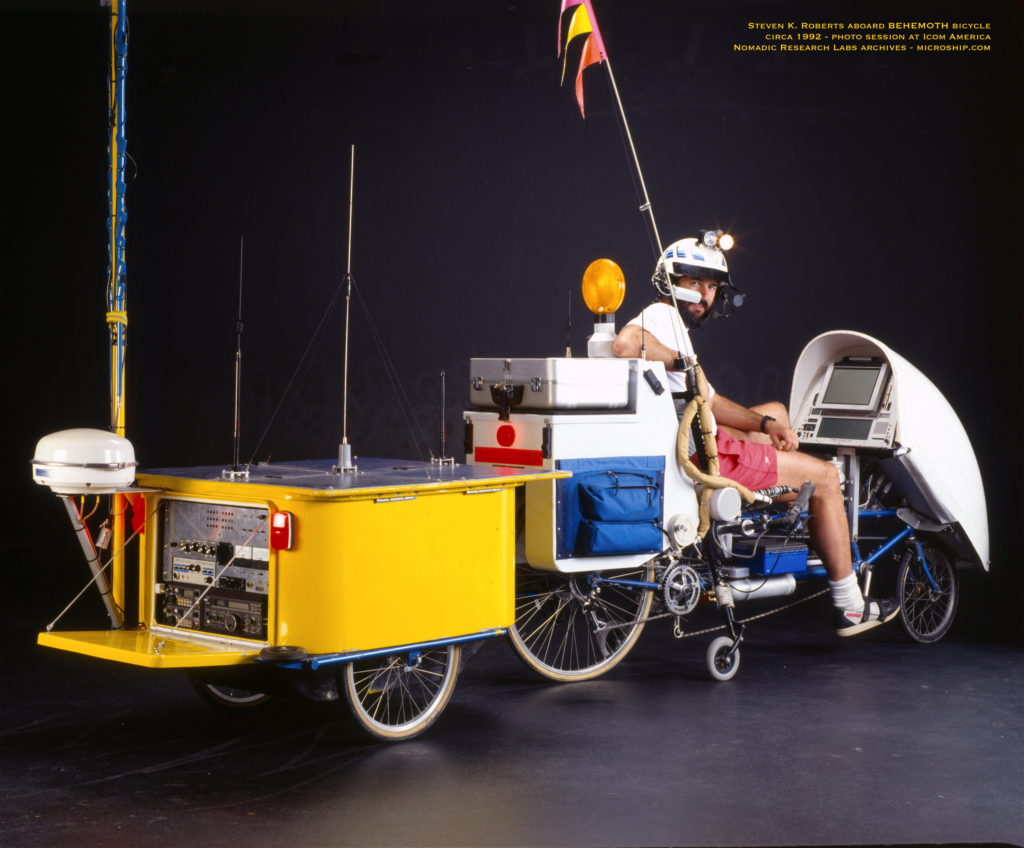
The Antenna Farm
BEHEMOTH is bristling with a veritable thicket of skyhooks, some of which have already received mention in this series. Now that they’re all mounted, however, it’s a good time for a summary.
Technically speaking, the bike carries 18 separate antennae, not including all the unintended ones (cables, LCD panels, spokes, and probably my nose). This all makes me wish for some magical phased array that could do it all… for every one of these has to be packaged, cabled, waterproofed, positioned optimally relative to the others, dragged through the viscous medium known as air, and hauled up hills. But, boy, can I ever communicate!
Let’s cruise up the electromagnetic spectrum from 150 kHz to 14 GHz and look at all the bike parts that radiate, resonate, ionize the atmosphere, or pluck whispers from the ether…
Active SWL whip (150 kHz – 30 MHz and 78-108 MHz)
This is seldom deployed while riding, but is the 46″ amplified whip that came with Sony’s new ICF-SW1 miniature digital shortwave receiver. Clever box — the radio has its own local whip, or you can plug in an RF amplifier module connected by micro-coax on a little reel to the big one.
HF mobile dipole (3-28 MHz)
Featured in the first issue of this series, this is proving to be a dramatic alternative to the traditional mobile vertical for HF ham operation (I use an Icom 725 transceiver). The basic problem with HF verticals is that they use the vehicle as a counterpoise — the bike is not only too small (hah) for effective use on low frequencies, but there is a very real danger of RF hot spots in this mode. The solution is a balanced antenna such as a dipole, and this one is constructed of two Outbacker Jr 7-band verticals (75-40-20-17-15-12-10 meters). They are normally stowed against the telescoping fiberglass mast (BYP, or Big Yellow Pole) on the back of the trailer, but can be flipped up to either a horizontal or vertical dipole configuration (also V or inverted-V, actually, though I haven’t tried it) and locked with knobs. The entire assembly while mobile is about 7 feet off the ground, extending to 13 feet when I’m camped. The BYP is hinged, and has a breakaway mechanism designed by Steve desJardins to protect the trailer body if I do something stupid like ride under a low tree limb.
HF wire dipole pack (7-28 MHz)
Experience has shown that there’s no substitute for full-size wire dipoles, so there’s a little nylon bag stuffed in the satellite basement under the WASU subflooring. Inside is a 50′ hank of RG-58 coax, some nylon rope, and simple dipoles for 40/15, 20, and 10 meters, each with an SO-239 connector at the center insulator. I’ll carry this until I have a chance to A-B it against the Outbackers under a variety of conditions, and will toss it with pleasure if the difference turns out to be minor. Stringing dipoles between trees can be an amusing ritual, but it does get old after a while — and is seldom worth the bother for a short layover. (Actually, I just made a tough decision yesterday to remove the MFJ tuner and artificial ground currently built into the communications bay. The plan was to carry a military surplus longwire and load it up whenever I’m stopped, but it’s just too much of a pain. I’ve never been happy with anything requiring a tuner, and the danger of high RF voltages from pilot error with grounding is too great. Besides, I need the comm bay real estate.)
Pager/CB helical duck (27 MHz)
There are three whip antennas on the trailer, evenly spaced along the centerline of the solar panels. Their mounting platforms are electronically bonded to the aluminum substrates of the panels, making them an excellent ground plane. (Someone pointed out that the giant semicrystalline silicon rectifiers atop this ground plane may detect transmitted RF and impose noise on the battery bus — any RF wizards out there want to comment on this?) The most forward of these antennas is the CB helical duck from Larsen, and it is switched through a couple of BNCs in the coax patch panel between the default security pager and the culturally useless but occasionally handy CB rig in the trailer.
2-meter halfwave (144-148 MHz)
The classic workhorse antenna for bicycle-mobile 2-meter operation is the Larsen halfwave whip. I’ve used this for years with excellent results: it has a wide radiation angle and accepts a seat-back mounting 15 degrees off vertical without loss of gain fore-aft; it needs no ground plane; it’s thin and discreet. If you operate bicycle mobile, forget the 1/4 and 5/8 wave units and get one of these. (A J-pole is a higher-gain option, but is generally much more delicate.) This unit, on an NMO mount bolted to a plug TIG-welded into the seat back, is kept from flailing uncontrollably by a sliding coupling to the fiberglass flagpole plugged into the seat tube. A coax cable runs directly to the console 2-meter rig — a hacked Icom u2AT, repackaged and powered via a 9-volt Power Trends switcher. Although there is a dual-bander on the trailer, using it along with the requisite coax patch panel, duplexer, and disconnect headers would require 6 coax connector pairs… a bit excessive for a micropower transceiver!
(2) wireless intercom helical whips (169-186 MHz)
One of the interesting features of BEHEMOTH’s security system is the ability to open a bidirectional audio link between bike and manpack, letting me find out when the beeper sounds if the situation justifies further action (often, a level-2 violation is just someone harmlessly touching the machine out of curiosity). I once tried this via 2 meters, but the very first test under real conditions yielded some bozo muttering: “what the **** is this piece of ****?” I panicked, imagining the reaction of the FCC and the amateur radio community, and immediately disconnected the circuit. This time, it’s a license-free low-power wireless intercom good for a few hundred feet, and the antennas, again from Larsen, are custom helical rubber ducks — one on the RUMP and the other on the manpack.
VHF-UHF dual-bander with duplexer (144-148 and 440-450 MHz)
This Larsen whip (guess you’re starting to notice that I like Larsen antennas) is a shunt-fed grounded coil dual-bander, which is 5/8-wave at 2 meters and 1/2 over 1/2 colinear at 440. Nice unit. It holds the coveted center spot on the solar ground plane, and is cabled to Larsen’s AD 2/70 duplexer. This presents two spigots, one for each band, and these are normally cabled to the Yaesu 290 and 790 multimode transceivers (my big guns for VHF and UHF). In case I haven’t mentioned them earlier in this series, these are excellent radios: very low battery drain, FM-CW-USB-LSB modes, plug-on modules for 25-watt amplifiers or battery packs, and pleasant user interface. I have used the pair, aided by a pair of ARR preamps and a KLM satellite antenna, to work OSCAR 13 with good results, and on the bike they will be used for the microsats, packet, and long-range terrestrial operation. Incidentally, this antenna tends to flail around if unsupported — I made a guying collar that slips over the top element onto the center coil, and attached four thin guy lines down to the solar surface. (The photo below is the OSCAR-13 experiment back in 1989, not what is now on BEHEMOTH!)
VHF-UHF dual-band helical whip (144-148 and 440-450 MHz)
Though not mounted on the bike itself, this one counts in our antenna chautauqua — it’s the rubber duckie attached to the Icom IC-24 dual-band handheld transceiver. Amazing device. Word on the street is that the antenna that comes with the Icom is not so hot, but I think they changed it in more recent deliveries. I have both the original Icom and a Larsen of similar dimensions, and will experiment with the 15″ Diamond dual-bander before packing up for departure.
(2) UHF packet link helical whips (457.525 and 457.575 MHz)
The bike-to-manpack data link consists of a pair of Motorola Radius RNET transceivers, and Larsen quarter-wave UHF ducks cut to my licensed itinerant and cargo frequencies are mounted on the RUMP at shoulder level and on a flip-up coax elbow on the Zero manpack. The coax patch panel in the trailer and a Lemo waterproof connector on the RUMP allow the bike’s data radio to be patched to the much more efficient dual-bander for long-range use.
VHF-UHF television whip (55-211 MHz and 471-801 MHz)
This is just the whip antenna on the Sony Watchman TV set.
UNGO security remote (300 MHz)
Inside the RUMP, the UNGO box security system is mounted on the forward fiberglass wall — watching for movement via a blob of mercury inside a 40 kHz field. This has proven in past machines to be highly reliable, and is the basic “Yikes! Someone is touching me!” sensor. Like most car alarms these days, it has a pocket remote control, and this little antenna picks up the digitally encoded 300 MHz signal.
Cellular elevated feed whip (821-896 MHz)
The rear spot on the solar lid belongs to the cellular whip, an elevated feed unit from Larsen with 3db gain. This has slightly better than normal cellular performance due to the extra height, but is nothing like the next item…
Cellular 6-element yagi (824-868 MHz)
You know how frustrating it is to be just outside cellular service range, watching your NO SERVICE light flash in the middle of a conversation? This fixes that problem dramatically — it’s a 6-element beam with 10db gain, cut for the cellular mobile unit’s transmit frequency range. I’ve tested this to about 100 miles on my Oki 491 with good results, and it is ONLY for use when unmoving and outside a normal service area since the radiation pattern can confuse the cell sites and frustrate normal channel-management operations. (A more typical use is to provide a cellular alternative to stringing wires for remote home sites.)
GPS receiver (1.575 GHz)
Mounted in a little nacelle molded into the new fiberglass fairing is an impressive bit of RF black magic, about 4″ square. This is the antenna for the Trimble TANS GPS navigation receiver, receiving spread spectrum time code data from a constellation of 24 satellites in circular orbit (about 17 are now in place). The antenna contains a 50db preamp powered via the coax feedline, and the actual element is a piece of thick glass-epoxy circuit board with a ground plane on one side and a rectangle on the other… fed with a single pin about a third of the way in from a corner. Something about standing waves and circular polarization… like I said, black magic! I call it my “here and now” box: when powered on, it puts out a continuous feed of latitude, longitude, and elevation (to about 100 feet); speed to .1 mph; and time to 1 microsecond.
Microwave security unit (10 GHz)
Moving up rapidly in the spectrum, we find a peak at 10 GHz — belonging to the AM Sensors (formerly Alpha Industries) microwave doppler motion sensor, the first level of security monitoring. The feedhorn is mounted vertically, penetrating the top of the RUMP and firing into what appears to be a fat mounting base for the 7″ yellow flasher. Inside is the hack: a copper 90-degree cone with its apex at the exit aperture of the antenna, resulting in a 360-degree radiation pattern around the bike with a 48 degree spread from the horizontal. Sensitivity is set to trigger a response when a person moves within 10-15 feet (not necessarily an alarm condition, but good to know).
Qualcomm satellite terminal (14 GHz)
Finally, up in the rarified ether of the Ku band, there is the OmniTRACS terminal. More than any other single bike system, this expresses the theme of this whole adventure: maximum connectivity under all conditions, rendering my physical location irrelevant via the magic of technology. (This system is described a little more fully in Issue #8.) Inside the 12″ diameter white dome is a stepper-motor-driven feedhorn, curved and shaped to yield a 5-degree wide by 40-degree high beam, centered at 40 degrees above the horizon. This is driven in azimuth by the controller, which monitors the signal from the GTE GSTAR satellite for feedback. Occasionally it glances over at a “tracker” bird to triangulate its own location within about 1000 feet, automatically location-stamping all my outgoing email. 1 GHz IF and REF lines connect the antenna to the OmniTRACS main unit under the trailer’s forward Thermoclear subfloor. The net effect? 24-hour-a-day email connectivity, hacked into internet via the Qualcomm hub in San Diego and a Sun 3/260 that rewrites mail headers and otherwise manages tha network hooks.
Phew. There. The only thing that scares me about all this (other than the usual problem of hauling it up hills and the potential for frying myself with some exotic blend of radiated energy), is the effect on certain non-technical functionaries who hold accept-reject power (and worse) at national borders. Bernard Magnouloux, circumnavigating the globe the hard way via bicycle (the length of Africa, the Length of South America, across China, etc), was harassed at some obscure African border for being a spy. It was the high-tech equipment that got him in trouble… a pocket shortwave radio like any of us could put on the Visa card for about sixty bucks. I may have problems with that someday…
“What is this?”
“Oh, just my satellite link. For email.” I smile disarmingly, hoping the guard will stop aiming his service revolver at my chest.
“And this?”
“Ah, that. A high-speed packet data link for file transfers between the bike and this little aluminum briefcase here….”
“I see. You will follow me. Keep your hands where I can see them.”
Considering that I was harassed for over an hour when bringing the bike into Port Angeles from its display at Expo in Vancouver, this is not at all farfetched. Next version… the stealth model…
Arthur C. Clarke observed quite accurately that “any sufficiently advanced technology is indistinguishable from magic.” Where governments are involved, replace “magic” with “national security risk.” In a philosophical sense, of course, that’s quite true… is there anything that shows LESS respect for artificial national borders than radio waves?
Cheers from the Bikelab, and see you in the ether!
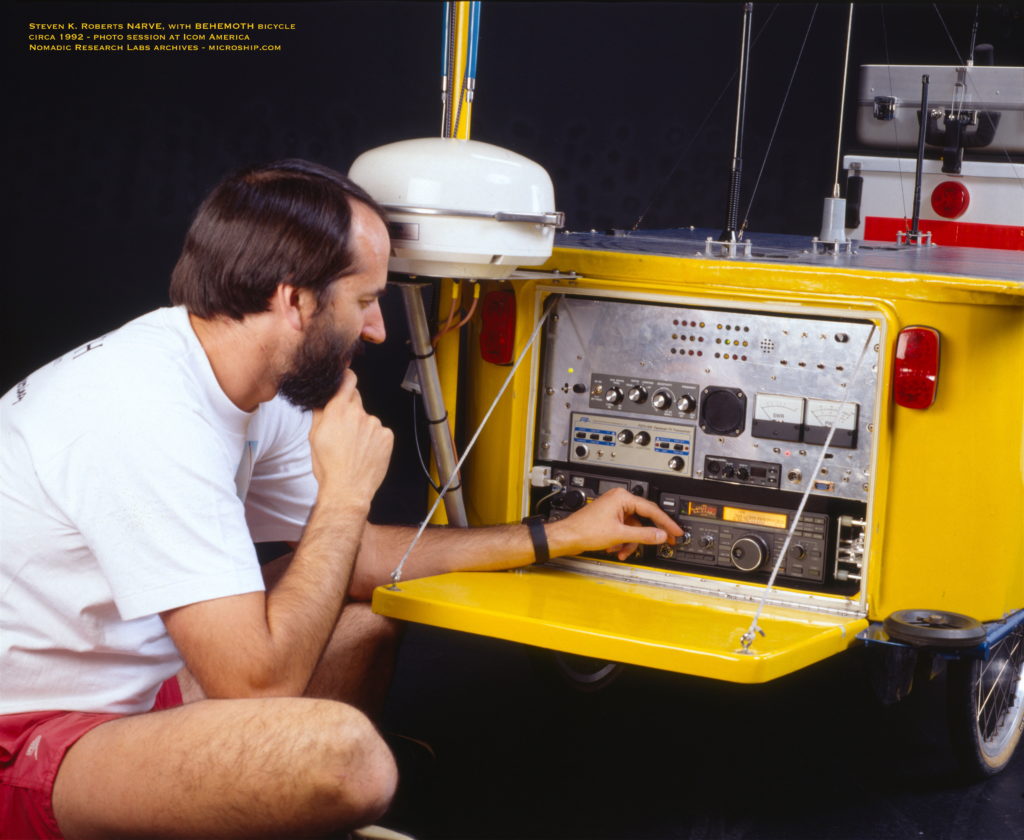


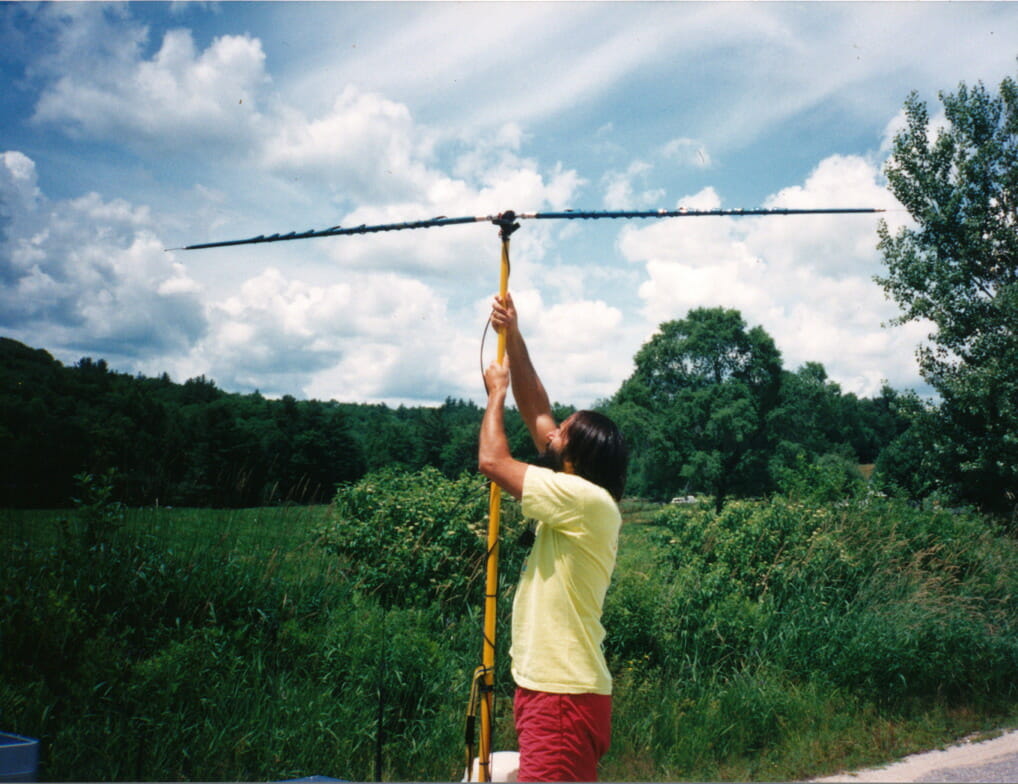
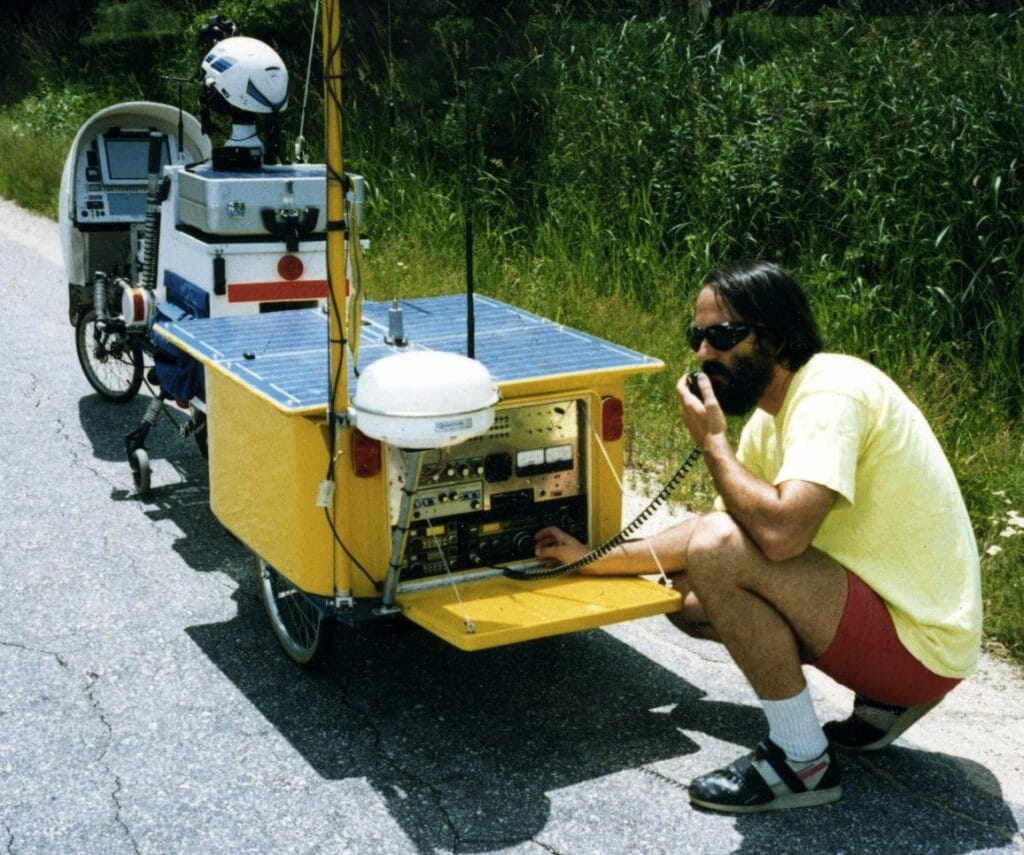
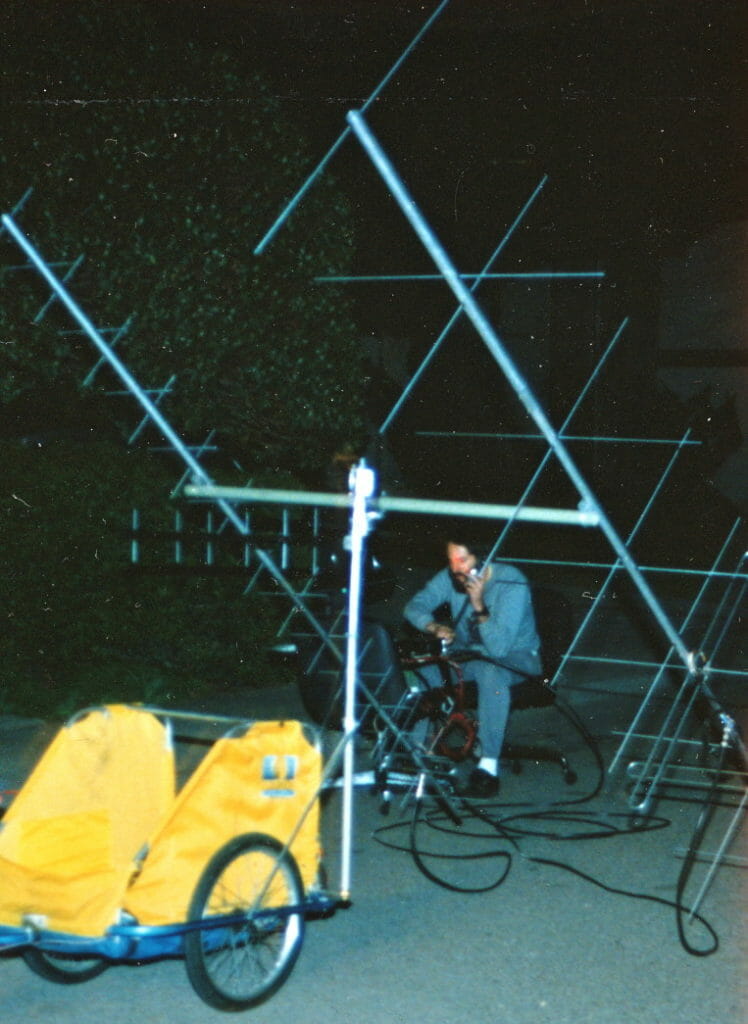
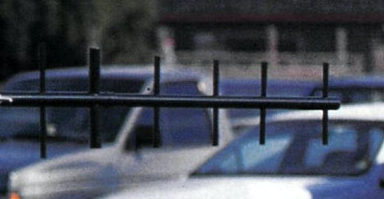
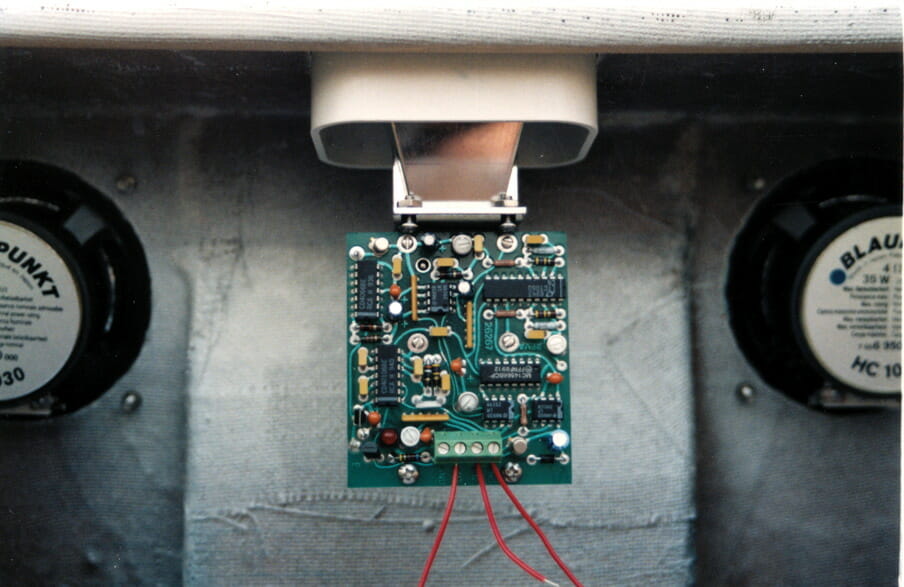
You must be logged in to post a comment.